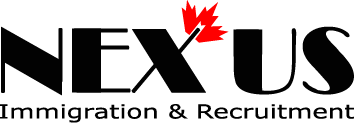
Introduction to Canadian Tax Saving
Canada is renowned for its high-income and high-tax environment, so tax saving skills are important for the tax planning. Learning and understanding the overall tax system is essential for every Canadian resident. Actively exploring the various tax-advantaged savings plans introduced by the federal government has become an annual nationwide endeavor. If you are a new immigrant, here are the two major categories of tax-saving tools you might have missed in your first year:
- Funds Considered Tax-Free Income:
- Tax-Free Savings Account (TFSA)
- Registered Education Savings Plan (RESP)
- Funds Considered Tax-Deferred Income:
- Registered Retirement Savings Plan (RRSP)
- First Home Savings Account (FHSA)
Remember to consult a financial advisor to tailor your strategy based on your unique circumstances. 🌟
Tax-Free Savings Account (TFSA):
- Goal: Used for tax-free growth toward various goals.
- Highlight:
- Income tax filing is not required
- Contributions are not tax-deductible.
- Investment income within TFSA tax-free.
- Withdrawals are tax-free.
- Annual contribution limit is announced annually by the federal government
(e.g. $6,000 for year 2024). - Unused contribution room can be carried forward indefinitely.
Registered Education Savings Plan (RESP):
- Goal: Designed for saving for a child’s higher education.
- Highlight:
- Will be granted upon completion of annual income tax filing assessment
- Contributions are not tax-deductible.
- Investment income grows tax-deferred.
- Withdrawals are taxed in the student’s hands (usually at a lower rate).
- Government grants (such as the Canada Education Savings Grant) boost savings.
- Maximum lifetime contribution per beneficiary: $50,000 (as of 2024).
Registered Retirement Savings Plan (RRSP):
- Goal: Reduces taxable income for current tax years and is used for retirement savings.
- Highlight:
- Will be granted upon completion of annual income tax filing assessment
- Contributions are tax-deductible.
- Investment income grows tax-deferred.
- Withdrawals are taxable.
- New contribution room is 18% of filed in come, as of 2024, but not more than the cap set by the government which may be announced every years.
- Unused contribution room can be carried forward indefinitely.
First Home Savings Account (FHSA):
- Goal: Aids in saving tax-free for the down payment on your first home.
- Highlights:
- Will be granted upon completion of annual income tax filing assessment
- Contributions are not tax-deductible.
- Investment income grows tax-free.
- Withdrawals are tax-free if used for a qualifying home purchase.
- Annual contribution limit: $8,000 per calendar year (up to a lifetime total of $40,000 as of 2024).
Comparing TFSA vs. RESP
Both Tax-Free Savings Accounts (TFSAs) and Registered Education Savings Plans (RESPs) offer tax-free growth.
In contrast, TFSA is designed for saving toward any financial goal with tax-free investment growth, whereas RESP is specifically for saving for a child’s higher education.
Comparing RRSP vs. FHSA
RRSP (Registered Retirement Savings Plan):
- Purpose: Provides tax deferral during the accumulation period.
- Focus: Primarily used for retirement savings.
FHSA (First Home Savings Account):
- Purpose: Aids in saving tax-free for the down payment on your first home.
- Focus: Specifically related to homebuying.”
Remember to consult a financial advisor to tailor your strategy based on your unique circumstances. 🌟







